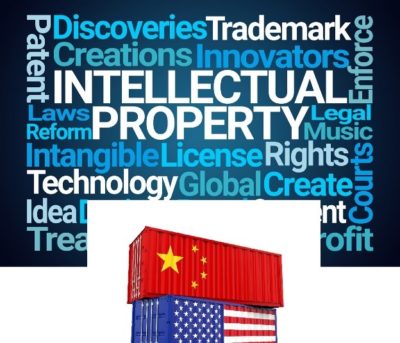By Paul Fudacz, Senior Attorney BLG
On May 29, 2018 President Trump updated the steps his administration initially announced in March related to trade actions designed to protect domestic technology and intellectual property from certain discriminatory and burdensome trade practices by China. The Chinese trade practices targeted relate to technology transfer, intellectual property, and innovation. The following actions were set forth in the May 29th announcement:
- To protect our national security, the United States will implement specific investment restrictions and enhanced export controls for Chinese persons and entities related to the acquisition of industrially significant technology. The proposed investment restrictions and enhanced export controls will be announced by June 30, 2018, and they will be implemented shortly thereafter.
- The United States will continue to pursue litigation at the World Trade Organization for violations of the Agreement on Trade-Related Aspects of Intellectual Property Rights based on China’s discriminatory practices for licensing intellectual property. The United States filed the case regarding these violations on March 23, 2018.
- Under Section 301 of the Trade Act of 1974, the United States will impose a 25 percent tariff on $50 billion of goods imported from China containing industrially significant technology, including those related to the “Made in China 2025” program. The final list of covered imports will be announced by June 15, 2018, and tariffs will be imposed on those imports shortly thereafter
Also announced was that the United States will continue efforts to protect domestic technology and intellectual property, stop noneconomic transfers of industrially significant technology and intellectual property to China, and enhance access to the Chinese market. Furthermore, the U.S. will request that China remove all of its numerous trade barriers, including non-monetary trade barriers. The U.S. will also request that tariffs and taxes between the two countries be reciprocal in nature and value.
Of the three enumerated actions announced, the third action Under Section 301 related to the imposition of a 25% tariff on $50 billion of Chinese imported goods will likely cause the most immediate hardship for U.S. importers of Chinese products. While the final list will be published June 15, with implementation to occur shortly thereafter, a preliminary 301 list included a wide variety of products of approximately 1,300 separate tariff items that included not only technology intensive items, but also a wide variety of commodity products, many of which are already subject to Antidumping / Countervailing duty orders, or the national security related Section 232 tariffs targeting steel and aluminum products.
In addition, for companies presently engaged, or seeking to expand their manufacturing or sourcing capabilities in China, the restrictions on technology / Intellectual Property transfer could have a significant impact on their ability to exchange information necessary to manufacture the products they wish to obtain or to sell into the Chinese marketplace.
While discussions with China will continue in an effort to mutually resolve the above outlined protective efforts, U.S. importers need to be prepared and fully understand the products that will be covered under this tariff action and factor the tariffs into their sourcing strategies. Also, those needing to share information / Intellectual Property with Chinese entities in connection with their business ventures will need to keep a close eye on any upcoming restrictions in order to clearly understand what can and cannot be provided in the way of technology related to their business goals.



























